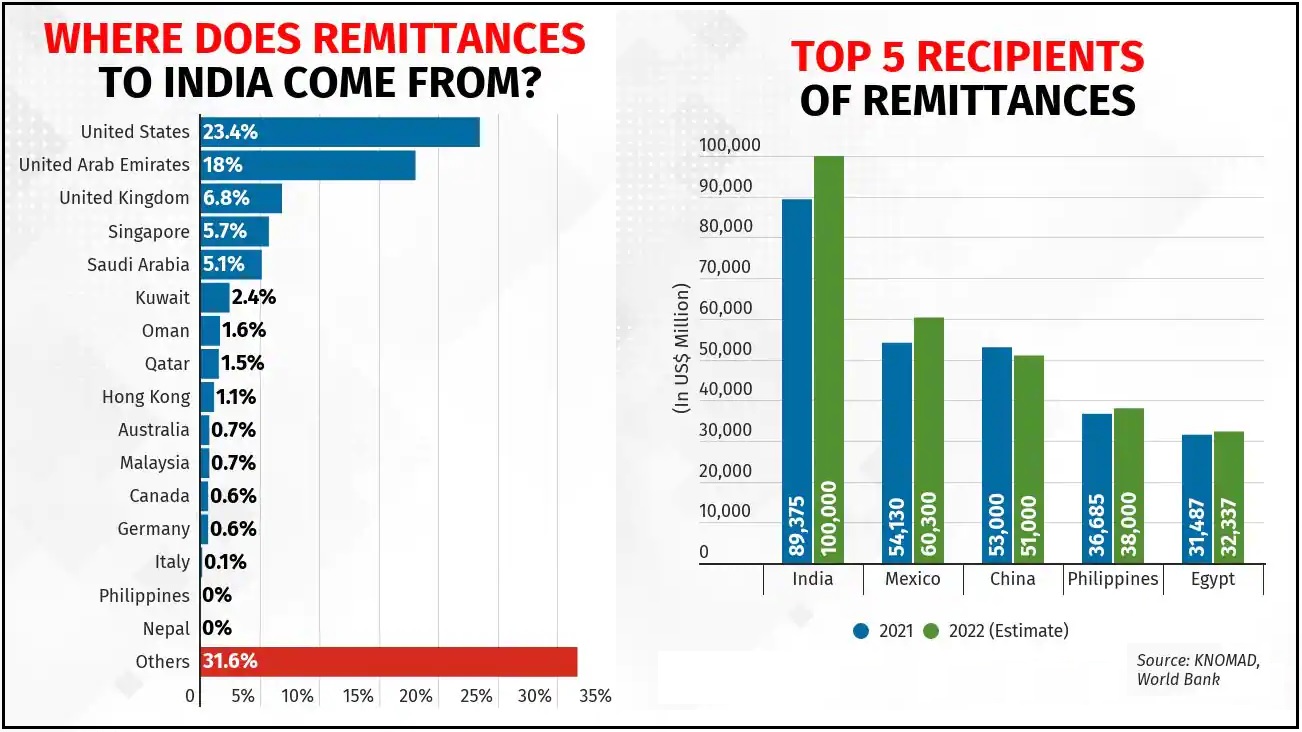900 319 0030
enquiry@shankarias.in
In its Migration and Development Brief, the World Bank has said that India is expected to receive a record 100 billion dollar in remittance in 2022.
According to the World Bank's Migration and Development Brief, India is the top remittance recipient, with around 87 billion dollars received in 2021.
The RBI Remittances Survey, 2021 shows that the four leading countries -the US, the United Arab Emirates (UAE), the UK and Singapore account for as much as 54% of India’s remittance inflows.

Why is remittance to India so high this year?
References